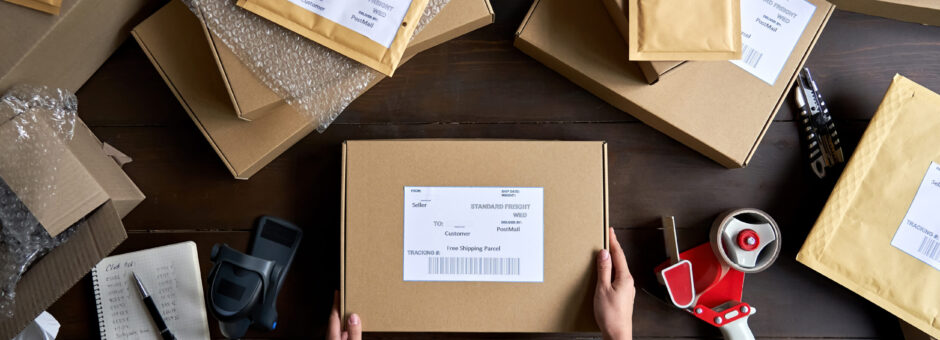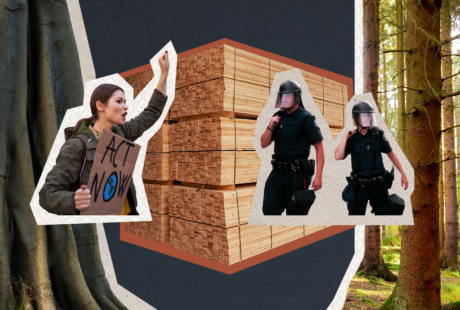Related:
The Green Economy and the Role of Renewable Resources
For the paper and forest products industry it’s imperative to stay on top of trends and respond accordingly.
Reports of the pulp and paper market’s demise were, as it turns out, greatly exaggerated. Far from a paperless world, we’ve instead seen an evolution of paper and paper products which will continue for the foreseeable future.
Developments in Pulp and Paper Demand
According to researchers at McKinsey & Company, the industry is not disappearing but ‘morphing’. On the decline is the graphic paper market, which is particularly susceptible to the digitization of communications.
“The graphic-paper market will continue to face declining demand worldwide, and our research has yet to find credible arguments for a specific floor for future demand,” predict McKinsey.1
While the internet taketh away, it also giveth, as the explosive growth of e-commerce increases demand for packaging. Likewise, demand for hygienic products such as wipes, tissues, and, infamously, toilet paper has grown as a result of the pandemic, as well as increased consumption in emerging economies. It all adds up to a fluid situation where careful planning is key.
The Future of Packaging
The rise of e-commerce will not only increase the amount of packaging utilized, but fundamentally alter the nature of it.
“We estimate that e-commerce will drive roughly half of the demand growth in transport packaging over the next several years,” says McKinsey. “As packaging adapts to this particular channel, it will have to find new solutions to a variety of issues, such as how to handle last-mile deliveries, the sustainability choice between fiber-based and lightweight plastic packaging, and the potential merging of transport (secondary) and consumer (primary) packaging, to name but a few.”1
The sky’s the limit for so called smart-packaging, which will be called upon to support data and analytics objectives through sophisticated tracking capabilities, improve last mile optimization, and combat counterfeiting.
As consumers are courted with custom product offerings, there will be a premium placed on flexibility at the production end, as opposed to mass orders of uniform packaging products. Eye-catching visuals and even augmented reality will be used to add to the customer experience.
Another factor increasing the demand for packaging is the ubiquity of online food delivery platforms such as DoorDash and UberEats.
“As long as consumers expect to have hot food delivered to their homes expeditiously, there will be a thriving thermal market in pulp and paper,” predicts LinchPinSEO, who also note the importance of innovation. “The materials used to produce packaging that’s resistant to grease are changing in an effort to eliminate fluorochemicals and replace it with a natural option that doesn’t contain any chemicals.”2
Packaging and Sustainability
Of course sustainability is at the heart of the future of packaging. In this regard, plastic’s image problem is paper’s opportunity as items such as plastic straws are replaced with paper or hybrid alternatives. Make-up giant L’Oreal has teamed up with Albea Packaging to create paper-based tubes for their product. The first generation of this packaging still contains a high level of plastics, making it unrecyclable, but future iterations aim to overcome this limitation.
Other shifts are in various stages of uptake. Lightweight packaging is being favoured, as it cuts expenses and reduces CO2 emissions. The industry is constantly working to increase the recyclability of its products, including their protective coatings. Packaging sizes and shapes will continue to be optimized for shipping and waste reduction.
Challenges in the Pulp and Paper Marketplace
Navigating this changing marketplace is a matter of analysis and investment. Market trends are inherently global in nature and often difficult to accurately predict. Some companies have switched capacity from graphic paper to packaging or tissues, only to find they’ve over-extended their hand.
There is also the question of positioning within the value chain. Acquisitions are frequent amongst big players, while collaboration with downstream players has proved fruitful for some.
Then, of course, come the supply chain complications, with unpredictable demand and shifting focus leaving some end users scrambling for labels and packaging.
“Virtually all paper products — from wedding invitations to cereal boxes — are in short supply as mills struggle to keep up with demand and shipping bottlenecks cause delays and problems for consumers and businesses,” reports Marketplace.3
Big data will be a part of the solution, as companies attempt to accurately gage the marketplace, as well as optimize their production and marketing systems.
The big takeaway is that strong leadership will be required to navigate the changing landscape. McKinsey summarize accurately:
“Installing an executive team that is able to understand new demands across customer businesses, digital, bio-products that cater to completely different value chains, and cross-industry collaboration will be a major task for CEOs and boards.”1




